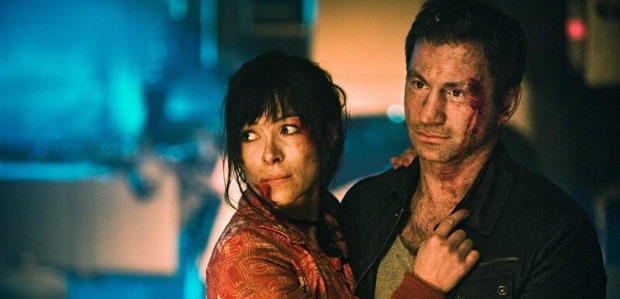The Girl Who Played With Fire
Salandar is an exceptional representation of a survivor, and Rapace conveys both sourness and steeliness, without ever losing the empathy of the audience.
Plot summary
Lisbeth Salander attempts to expose the seedy underworld of sex trafficking in Sweden. In exposing this truth, the painful reality of Lisbeth's own story is also uncovered.

The Girl Who Played With Fire occupies a slightly uneasy place in the Millennium trilogy, in that it is based on arguably the weakest novel in the saga and primarily serves to set up the more intense dramas of the third installment.
Given that the first film, The Girl With The Dragon Tattoo, gave away Played With Fire’s key plot point (that, as a child, Lisbeth Salandar torched her abusive father and was incarcerated for it), there is a distinct loss of suspense. Perhaps viewers who have not read the series will not find this a problem, but this change fails to improve upon the source material. Elsewhere, the film is meticulously similar to the novel: Salandar is accused of three murders, and Mikael Blomkvist (Michael Nyqvist) throws himself into clearing her name. Familiar characters, accurate locales and the mystery-thriller atmosphere are all present and correct.
It’s difficult to imagine anyone other than Noomi Rapace playing Salandar, the eponymous heroine. The character is an exceptional representation of a survivor, and Rapace conveys both sourness and steeliness, without ever losing the empathy of the audience. Salandar’s sexuality is also shown with unapologetic frankness: an explicit lesbian love scene passes with no great fanfare. Most of the male (and therefore antagonist) characters are played by uniformly puffy, unpleasant, ordinary-looking men. No cartoon villains here; just the kind of middle aged men who pass through life without attracting attention to themselves – a shrewdly realistic piece of casting. Blomkvist looks gently nonplussed throughout, which is somehow quite a sweet expression for a hard-nosed investigative journalist to sport.
The film’s main issue is that of pace – things often drag. As it’s a crime thriller, there is lots of expository talking and a barrage of scenes featuring people doing research on their computers. Not exactly thrilling stuff. Even climactic combat scenes between Salandar and her enemies lack dramatic power. This is a film intended to please the faithful, rather than enrapture new fans, and so on that level is succeeds just fine. Ultimately, though, Played With Fire feels like a means to an end: namely, The Girl Who Kicked The Hornet’s Nest.
By far the best thing about this film, and the series as a whole, is the galvanizing nature of Salandar’s attitude towards the world that tried to make a victim of her. She gives as good as she gets. There’s something exhilarating about seeing a female character stand up for herself against those who abused her for being a woman. It’s similarly refreshing that she refuses to explain her reasons for doing so. After all, what does she owe to the men who have repeatedly betrayed her? The Girl With The Dragon Tattoo and The Girl Who Played With Fire are superlative examples of escapist feminist cinema, if not of cinema in general. Here’s hoping that the final installment will do full justice to the Millennium legacy.











COMMENTS